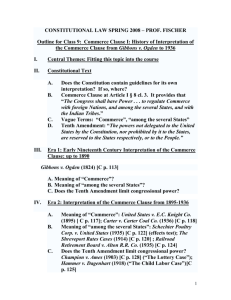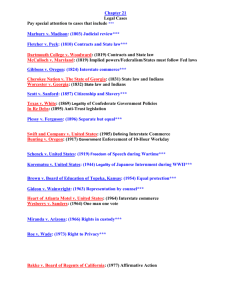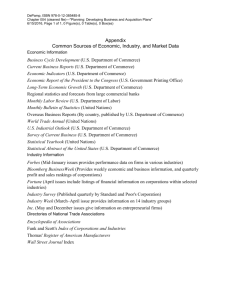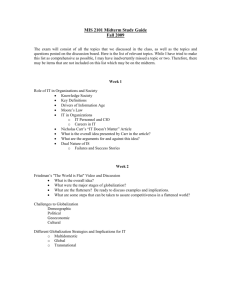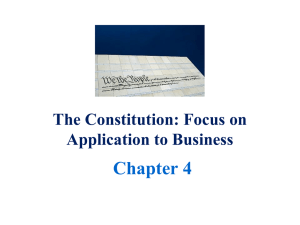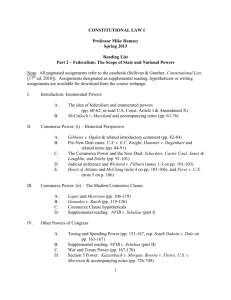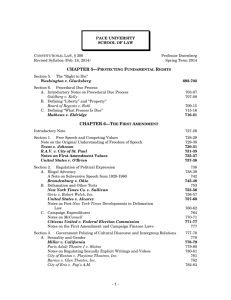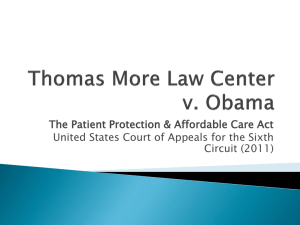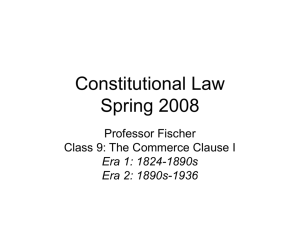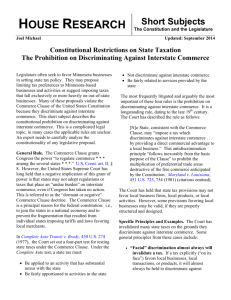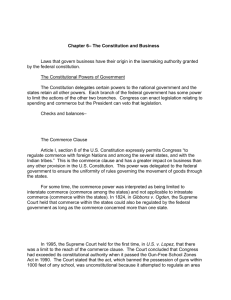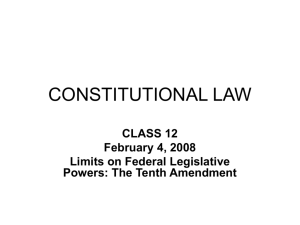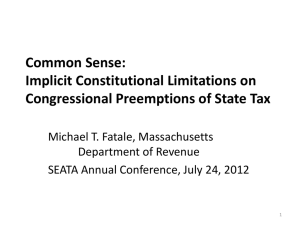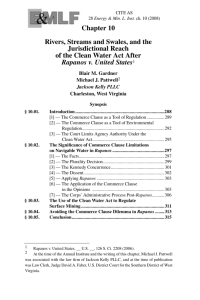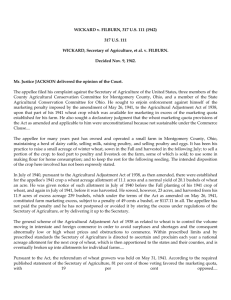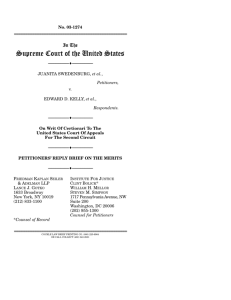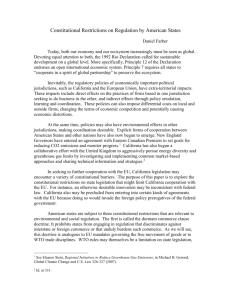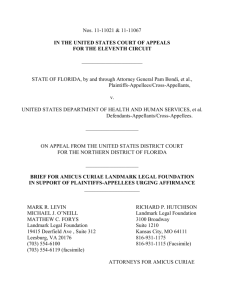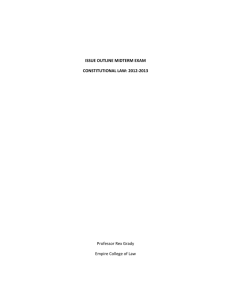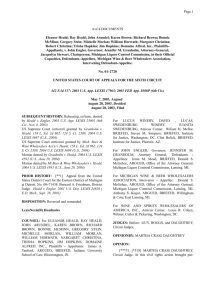Class Outline
advertisement
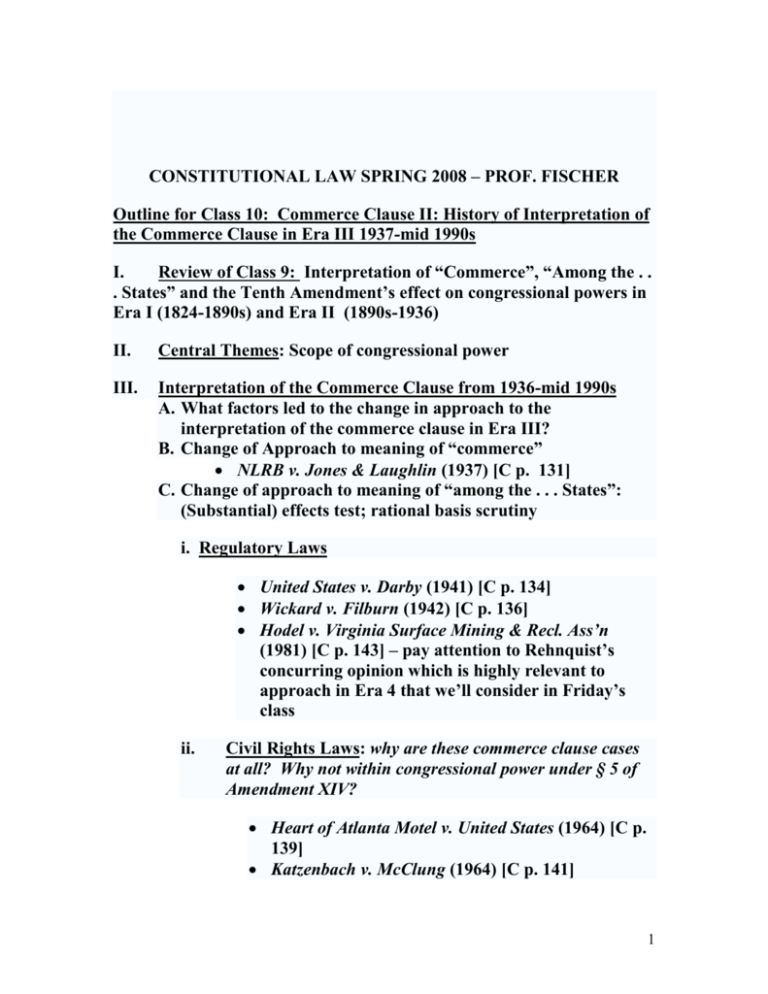
CONSTITUTIONAL LAW SPRING 2008 – PROF. FISCHER Outline for Class 10: Commerce Clause II: History of Interpretation of the Commerce Clause in Era III 1937-mid 1990s I. Review of Class 9: Interpretation of “Commerce”, “Among the . . . States” and the Tenth Amendment’s effect on congressional powers in Era I (1824-1890s) and Era II (1890s-1936) II. Central Themes: Scope of congressional power III. Interpretation of the Commerce Clause from 1936-mid 1990s A. What factors led to the change in approach to the interpretation of the commerce clause in Era III? B. Change of Approach to meaning of “commerce” NLRB v. Jones & Laughlin (1937) [C p. 131] C. Change of approach to meaning of “among the . . . States”: (Substantial) effects test; rational basis scrutiny i. Regulatory Laws United States v. Darby (1941) [C p. 134] Wickard v. Filburn (1942) [C p. 136] Hodel v. Virginia Surface Mining & Recl. Ass’n (1981) [C p. 143] – pay attention to Rehnquist’s concurring opinion which is highly relevant to approach in Era 4 that we’ll consider in Friday’s class ii. Civil Rights Laws: why are these commerce clause cases at all? Why not within congressional power under § 5 of Amendment XIV? Heart of Atlanta Motel v. United States (1964) [C p. 139] Katzenbach v. McClung (1964) [C p. 141] 1 iii. Criminal Laws Perez v. United States (1971) [C p. 143] (three categories that Congress has power to regulate under commerce clause: (i) channels of interstate commerce; (ii) instrumentalities of interstate commerce; (iii) intrastate activities with (substantial) effect on interstate commerce) D. Approach to Tenth Amendment in Era III United States v. Darby (1941) [C p. 134]: Tenth Amendment is a “truism” National League of Cities v. Usery (1976) [C p. 145] Garcia v. San Antonio Metropolitan Transit Authority (1985) [C p. 148] (overruled Usery). 2

